Episodes
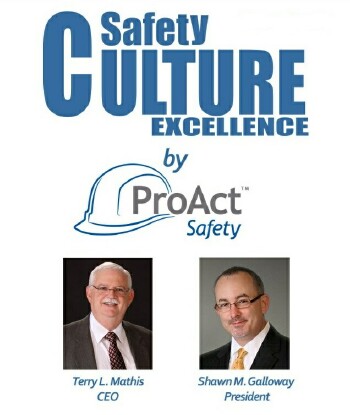
Wednesday Oct 01, 2014
Performance: People or Process?
Wednesday Oct 01, 2014
Wednesday Oct 01, 2014
What gets an organization the most excellent performance: good people or good processes? Obviously, these two are not mutually exclusive, but most organizations that utilize both favor one or the other. If you view excellent performance as something delivered by all stars, then you favor recruiting and developing people. If you view excellent performance as something delivered by a highly-functioning team, you tend to select adequate workers and give them specific processes to define their contributions to performance.
The most excellent organizations we work with have an interesting blend of these two approaches. They lean heavily toward the people aspect without neglecting the definition that comes from process. In the extreme this is a choice between “hang your brain at the door and follow the procedure” and “ let’s all hold hands and sing Kum ba yah.” Even great people need direction and no amount of direction can compensate for too much lack of ability.
Neither of these approaches alone has ever proven to produce the highest levels of performance, but the right combination and blending of the two can and has led organizations to levels of performance they didn’t think was possible.
-Terry L. Mathis
For more insights, visit www.ProActSafety.com
Terry L. Mathis is the founder and CEO of ProAct Safety, an international safety and performance excellence firm. He is known for his dynamic presentations in the fields of behavioral and cultural safety, leadership, and operational performance, and is a regular speaker at ASSE, NSC, and numerous company and industry conferences. EHS Today listed Terry as a Safety Guru in ‘The 50 People Who Most Influenced EHS in 2010, 2011 and 2012-2013. He has been a frequent contributor to industry magazines for over 15 years and is the coauthor of STEPS to Safety Culture Excellence, 2013, WILEY.
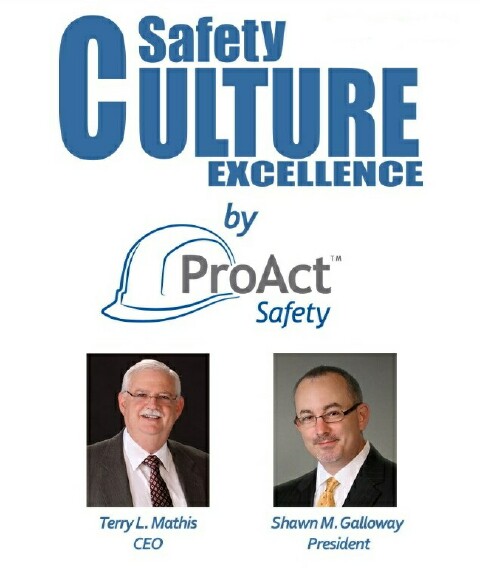
Wednesday Sep 17, 2014
Working In Safety vs. Working on Safety
Wednesday Sep 17, 2014
Wednesday Sep 17, 2014
A business unit manager who was frustrated with a bottleneck in his operations took over a job for several hours from an operator to speed up production. His regional manager walked in and found him there and asked what he was doing. When he explained that he was doing the job of an operator, his boss asked him, “While you are doing that, who is running the unit?” He was working “IN” his unit and not “ON” it.
Many safety professionals are entirely too bogged down with day-to-day busywork to work “on” safety. Others choose to roll up their sleeves and jump in rather than to stand back and strategically evaluate what really needs to be done. Even corporate safety leaders often choose to do work rather than to manage safety strategically. The net result is that many safety efforts are strategy-less, leaderless balls of energy being hurled at the big problem of accidents. The underlying premise is that somehow more effort will win the day.
Often what is needed is not more but better effort. Better effort is accomplished strategically. When everyone is putting forth effort for the sake of effort and no one is working on strategy, that just doesn’t happen.
-Terry L. Mathis
For more insights, visit www.ProActSafety.com
Terry L. Mathis is the founder and CEO of ProAct Safety, an international safety and performance excellence firm. He is known for his dynamic presentations in the fields of behavioral and cultural safety, leadership, and operational performance, and is a regular speaker at ASSE, NSC, and numerous company and industry conferences. EHS Today listed Terry as a Safety Guru in ‘The 50 People Who Most Influenced EHS in 2010, 2011 and 2012-2013. He has been a frequent contributor to industry magazines for over 15 years and is the coauthor of STEPS to Safety Culture Excellence, 2013, WILEY.

Monday Sep 08, 2014
352 - The 4 Questions to Shape Performance
Monday Sep 08, 2014
Monday Sep 08, 2014
Hello everyone, here is a quick video to help you shape performance in those you are coaching, leading and/or managing.
Have a great week!
Shawn M. Galloway
www.ShawnGalloway.com
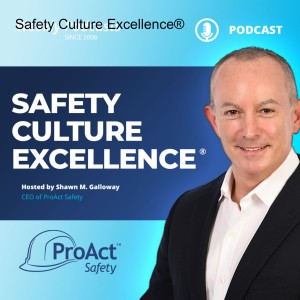
Tuesday Aug 12, 2014
STEPS to Safety Culture Excellence Workshop - October 2014
Tuesday Aug 12, 2014
Tuesday Aug 12, 2014
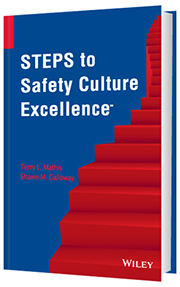
Based on the book, STEPS to Safety Culture Excellence, the authors will lead this workshop and provide a detailed roadmap on how to develop a three to five year safety excellence business plan. This two-day workshop is limited to ten participants. It would be helpful if each attendee read the book prior to the event to escalate the discovery process.
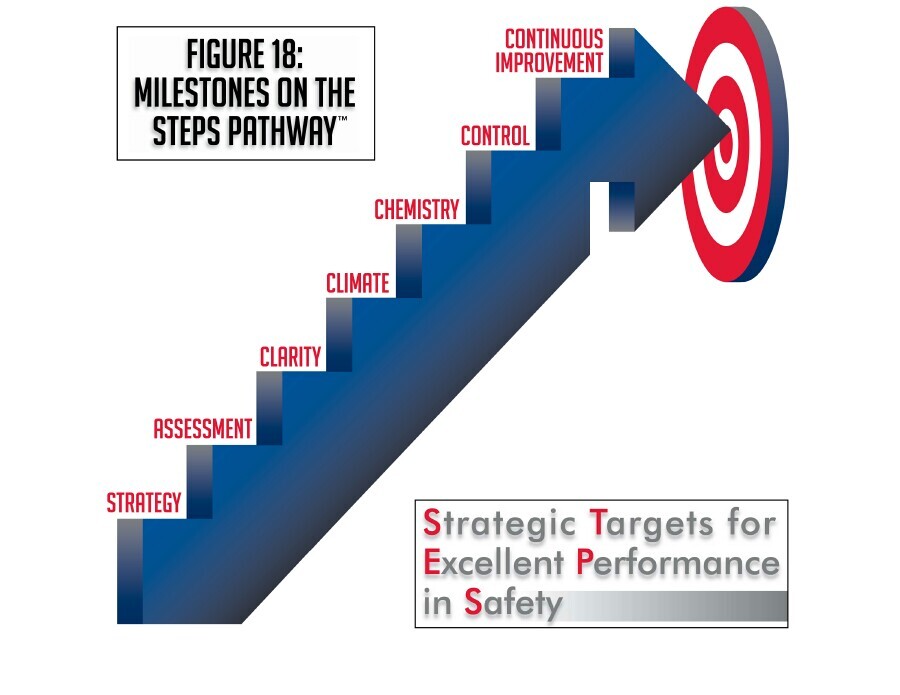
ProAct Safety® recently compiled data on over 1,100 sites that requested our help in improving safety. The commonalities of these sites' issues has led to a new approach to solving safety problems and permanently implementing continuous improvement. The approach includes organizational structure, problem identification, issue prioritization, action plan development, improvement metrics, and a motivational and marketing strategy to ensure sustainability. The process is called STEPS (Strategic Targets for Excellent Performance in SafetySM).
Objectives:
- Develop a solid understanding of a safety excellence strategy
- Learn the leading causes of safety program ineffectiveness and failure
- Examine a standard methodology used by excellent safety organizations to identify virtually any type of safety issue or problem
- Learn to use statistical tools to prioritize issues by their potential impact
- Learn to develop action plans to solve safety problems
- Explore innovative ways to measure success and progress
- Discover how one process can replace multiple programs and allow for seamless transition of focus without causing a flavor-of-the-month culture
Workshop Takeaways - Attendees will be provided with:
- Electronic Materials (Templates) to return to their organization and facilitate discussions for the creation of their unique safety excellence strategy.
- A 60-Minute Recorded High-Level Webinar outlining the key STEPS to Safety Culture Excellence methodologies. This will help convey the messages and build support and understanding for the necessary path forward. Moreover, this can also help during on-boarding of future leaders to provide an understanding of why the strategy was created, furthering the future support necessary as the organization continuously improves safety performance and culture and acquires or promotes new leadership talent.
- Access to Shawn M. Galloway or Terry L. Mathis from 8 am to 5 pm CT during the week by email and phone for one month following the workshop, to help support efforts by coaching and advising through the initial creation of the strategy. If not immediately available, calls and emails will be returned within 24 hours.
- A personalized autographed copy of the book, STEPS to Safety Culture Excellence.
For more information, visit this link.
See you there!
Shawn M. Galloway
ProAct Safety, Inc.

Wednesday Jul 16, 2014
Culture and Customizing
Wednesday Jul 16, 2014
Wednesday Jul 16, 2014
Some of the old safety programs and processes are still alive and well in certain organizations. When I examine how they have survived so long I almost always find that the program has been modified and customized. The organization is not still doing the process like they were taught, they have “made it their own” over the years using the basic concept(s) but modifying the details.
Another term for customizing might be “culturizing.” When a group of people not only use a methodology but modify it to fit their specific needs and standards, it truly becomes a part of the organizational culture. It is no longer solely the brainchild of the originator, but the adopted child of the group. As it permeates the group it becomes a part of the culture that is shared and handed down.
Such processes never become outdated because they are fluid and the group can evolve them to meet changing needs and challenges. Perhaps it should be the goal of every safety program or process to have this kind of flexibility built in as a sustainability tool. If this were the case, there would likely be fewer flavors of the month and more tools to build strong safety cultures.
-Terry L. Mathis
For more insights, visit www.ProActSafety.com
Terry L. Mathis is the founder and CEO of ProAct Safety, an international safety and performance excellence firm. He is known for his dynamic presentations in the fields of behavioral and cultural safety, leadership, and operational performance, and is a regular speaker at ASSE, NSC, and numerous company and industry conferences. EHS Today listed Terry as a Safety Guru in ‘The 50 People Who Most Influenced EHS in 2010, 2011 and 2012-2013. He has been a frequent contributor to industry magazines for over 15 years and is the coauthor of STEPS to Safety Culture Excellence, 2013, WILEY.

Monday Jul 14, 2014
345 - When Site Managers Undo Corporate Safety
Monday Jul 14, 2014
Monday Jul 14, 2014
Greetings everyone, this podcast recorded while in Banff, Alberta. I’d like to share an article Terry Mathis wrote that was published May 2014 in EHS Today Magazine. The published article can either be found on the magazine’s website or under Insights at www.ProActSafety.com.
I hope you enjoy the podcast this week. If you would like to download or play on demand our other podcasts, please visit the ProAct Safety’s podcast website at: http://www.safetycultureexcellence.com. If you would like access to archived podcasts (older than 90 days – dating back to January 2008) please visit www.ProActSafety.com/Store. For more detailed strategies to achieve and sustain excellence in performance and culture, pick up a copy of our book, STEPS to Safety Culture Excellence - http://proactsafety.com/insights/steps-to-safety-culture-excellence
Have a great week!
Shawn M. Galloway
ProAct Safety

Monday Jun 23, 2014
342 - Is Winning or Losing a Safety Culture Habit?
Monday Jun 23, 2014
Monday Jun 23, 2014
Greetings everyone, this podcast recorded while in Auburn Hills, MI. I’d like to share an article I wrote that was published May 2014 in Occupational Health & Safety Magazine. The published article can either be found on the magazine’s website or under Insights at www.ProActSafety.com.
I hope you enjoy the podcast this week. If you would like to download or play on demand our other podcasts, please visit the ProAct Safety’s podcast website at: http://www.safetycultureexcellence.com. If you would like access to archived podcasts (older than 90 days – dating back to January 2008) please visit www.ProActSafety.com/Store. For more detailed strategies to achieve and sustain excellence in performance and culture, pick up a copy of our book, STEPS to Safety Culture Excellence - http://proactsafety.com/insights/steps-to-safety-culture-excellence
Have a great week!
Shawn M. Galloway
ProAct Safety

Monday Jun 09, 2014
340 - STEPS to Safety Culture Excellence Workshop
Monday Jun 09, 2014
Monday Jun 09, 2014
A workshop about developing and executing against a comprehensive strategy to significantly enhance injury prevention efforts and measurably evolve the culture, by the thought-leaders at ProAct Safety
Based on the recent book, STEPS to Safety Culture Excellence, the authors will lead this workshop and provide a detailed roadmap on how to develop a three to five year safety excellence business plan. This two-day workshop is limited to ten participants. It would be helpful if each attendee read the book prior to the event to escalate the discovery process.
For more information visit: http://proactsafety.com/events/steps-to-safety-culture-excellence-workshop
Shawn M. Galloway
ProAct Safety
www.ProActSafety.com
www.SafetyCultureExcellence.com

Wednesday Jun 04, 2014
Who is Driving Safety?
Wednesday Jun 04, 2014
Wednesday Jun 04, 2014
The leaders of an organization who were asking for my help to improve their safety efforts told me that they were all pushing safety as hard as they could. I asked them who was driving safety and how long it had been stalled and needing to be pushed. Almost every leadership team is either neglecting, pushing or driving safety. Neglect brings on disaster. The need for pushing often results from previous neglect. Driving safety almost always results in progress and improvement.
Just as the term implies, driving is giving direction, speed and stability to the safety effort. Stalled efforts may require some pushing, but well-running efforts simply need drivers. The most recognized drivers of safety are leadership, supervision, guidelines, and training. Leaders need to give safety strategic direction. Supervisors need to steer and correct the daily efforts. Guidelines, such as rules, procedures, and P.P.E. requirements should provide a road map for the workplace decisions that impact safety. Training should ensure that everyone knows the guidelines and can also recognize and manage the risks in the workplace that may not be fully covered by the guidelines.
Safety efforts that are strategically driven shape the perceptions and culture of the safety efforts. The perceptions and culture combine with the training to shape the daily performance. Supervision keeps the daily performance on track. The daily performance produces the results that are measured by the lagging indicators of safety. If your lagging indicators indicate you are not at your desired destination, ask yourself “who is driving?”
-Terry L. Mathis
For more insights, visit www.ProActSafety.com
Terry L. Mathis is the founder and CEO of ProAct Safety, an international safety and performance excellence firm. He is known for his dynamic presentations in the fields of behavioral and cultural safety, leadership, and operational performance, and is a regular speaker at ASSE, NSC, and numerous company and industry conferences. EHS Today listed Terry as a Safety Guru in ‘The 50 People Who Most Influenced EHS in 2010, 2011 and 2012-2013. He has been a frequent contributor to industry magazines for over 15 years and is the coauthor of STEPS to Safety Culture Excellence, 2013, WILEY.

Monday Apr 21, 2014
338 – Creating a Culture of Have to or Want to?
Monday Apr 21, 2014
Monday Apr 21, 2014
Greetings everyone, this podcast recorded while in Clinton, IA. I’d like to share an article I wrote that was published April 2014 in BIC Magazine. The published article can either be found on the magazine’s website or under Insights at www.ProActSafety.com.
I hope you enjoy the podcast this week. If you would like to download or play on demand our other podcasts, please visit the ProAct Safety’s podcast website at: http://www.safetycultureexcellence.com. If you would like access to archived podcasts (older than 90 days – dating back to January 2008) please visit www.ProActSafety.com/Store. For more detailed strategies to achieve and sustain excellence in performance and culture, pick up a copy of our book, STEPS to Safety Culture Excellence - http://proactsafety.com/insights/steps-to-safety-culture-excellence
Have a great week!
Shawn M. Galloway
ProAct Safety

